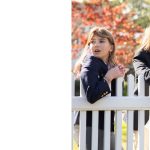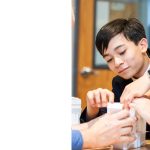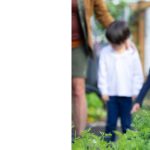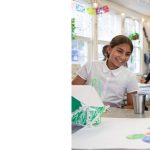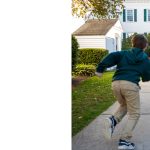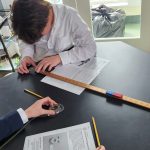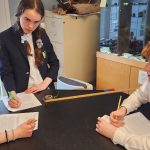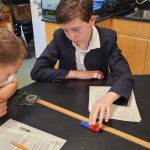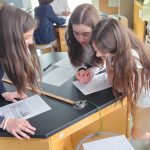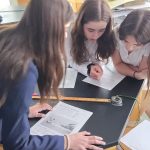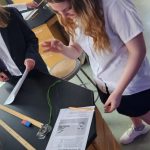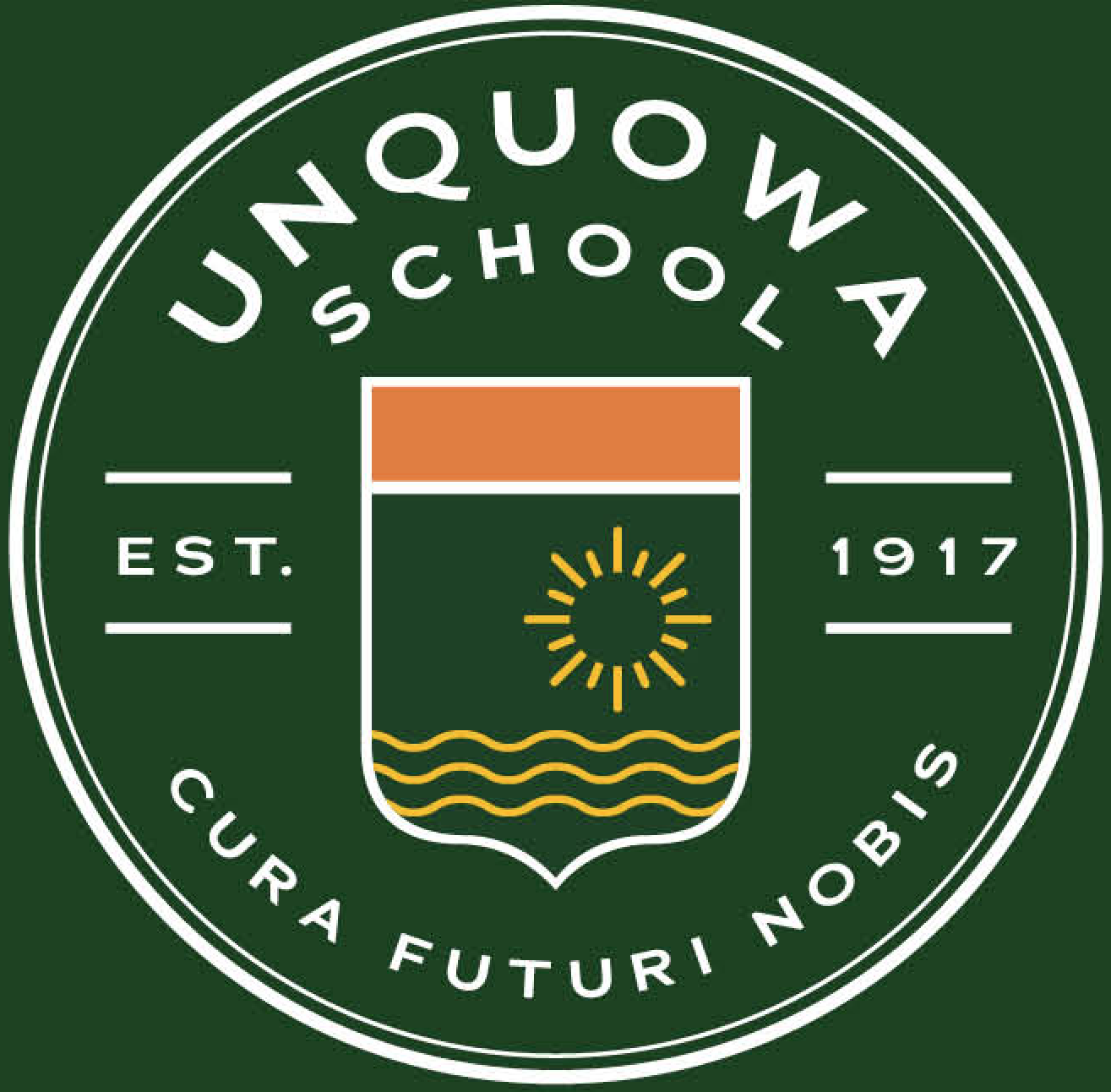Magnets & Compasses
Posted by Joshua Bartosiewicz- Adjusting the compass at the end of the meter stick.
- Recording their first measurements.
- Moving the magnet closer to the compass to see how the magnetic field interferes with the compass reading.
- Observing the change of the needle on the compass as the magnet moves closer to it.
- Reading the angle on the compass.
- Observing the compasses reaction to the magnet.
In physics, 8th grade has plunged into the realm of magnets, electricity, fields and electromagnets. Our first lab in this area involved magnets and compasses. Students were given a bar magnet, a compass, a meter stick and a lab write-up. The goal of this lab was for students to see that magnetism is a non-contact force; this means that the magnet doesn’t need to physically touch another object in order to have an effect on it (another example of a non-contact force is gravity). Compasses are used for navigation (way before GPS was a thing!) and they react to the Earth’s magnetic field, in which they are always pointing towards magnetic north.
In this lab, students place a meter stick on the table with the compass on one end of the meter stick. Next, students put a bar magnet with the “south” end or blue end onto the table on the other end of the meter stick, opposite of the compass. Next, the students slowly pushed the magnet closer to the compass. Most students began to see the needle of the magnet shift angles once the magnet was just 32 centimeters away! The students recorded the distance of the magnet every time it changed the needles position by 15 degrees. After 5 data points were collected the students then plotted their information onto a graph to visually see the trend. The 8th grade noticed that the closer the magnet got to the compass, the more of an effect the magnetic field had on the compass and it would throw off the reading! In the end, the students gained a wonderful understanding of how magnetic fields are non-contact forces and they can have an impact on objects from a distance!
← Salsa & Merengue Fun: A Dance-Filled Spanish Class! Spring Explorations in the Woods →


